Bilbao in northern Spain has transformed itself from the country’s industrial powerhouse to a vibrant city of art and culture. We share the best things to do in Bilbao, whether you’re visiting the city for a weekend break or as a gateway to exploring Spain’s Basque Country.

While the Guggenheim is Bilbao’s star cultural attraction, there’s plenty more to see, from river walks and views from the green surrounding hills, to grazing on Pintxos in the charming Old Town.
And it’s easy to go car free in the city, with an integrated system of trams and metro as well as buses for day trips along the Basque coastline.
This article may contain affiliate links that provide commission on purchases you make at no extra cost to you. As an Amazon Associate I earn from qualifying purchases.
Top Things to do in Bilbao
Bilbao is a large city and you need a few days to do it justice. But for those who are short of time, here’s what you should see first.
- The Guggenheim – allocate a few hours to Frank Gehry’s architectural masterpiece packed full of contemporary art and sculpture – don’t miss Jeff Koon’s Puppy, the Maman spider and other sculptures outside.
- Take a walk along the river from the Guggenheim to the Old town, taking in iconic bridges and beautiful architecture, especially the colourful buildings opposite the Mercado de la Ribera.
- Call in at Bilbao’s largest market, the Mercado de la Ribera which overlooks the river, shop for a picnic or try a few lunchtime Pinxtos from the cafe area.
- Wander through the Old Town or Casco Viejo, visit the cathedral, soak up the atmosphere of Las Siete Calles (Seven Streets).
- As evening falls, try some Pinxtos with a drink in the bars of Plaza Nueva – we especially recommend Gure Toki but many of the bars in the square are excellent.

1. Guggenheim Museum
The Guggenheim museum of contemporary art is deservedly the top attraction in Bilbao. Designed by Frank Gehry, the building is a sculpture in itself, its surfaces covered by titanium panels that change colour with the light.
The gallery was built on a former wharf beside the River Nervión and after opening in 1997 quickly became a popular tourist attraction. It’s credited with a transforming Bilbao’s reputation, from a place of shipbuilding and industry into a city of art and architecture.
Once inside, the building has a light filled central atrium with galleries radiating from it, offering different perspectives and views from above and below.

Highlights of the Guggenheim collection
These are the things we enjoyed most inside the Guggenheim:
- The Matter of Time – an enormous gallery filled with curving corroded steel sculptures by Richard Serra that you wander into like a maze, or view from the gallery above.
- The Pop Art galleries, full of colourful pieces by Gilbert & George, Roy Lichtenstein and Andy Warhol, especially Jeff Koon’s tulips.
- Infinity Mirrored Room – A Wish for Human Happiness Calling from Beyond the Universe by Yayoi Kasuma – an immersive walk inside a mirrored box with coloured glowing baubles and lights.

Top Tip: The Guggenheim can get very busy at peak times, so we recommend booking a timed entry ticket before you arrive. Admission is €18 with concessions for seniors and students, under 18s free.
2. Sculpture outside the Guggenheim
Once you’ve visited inside the Guggenheim, there’s still more sculpture that you can see at any time for free. In the pool of water that surrounds the river facing side the building, look out for the Fog sculpture by Fujiko Nakaya, a mist that floats above the surface, and the Fountains of fire by Yves Klein that flare up at night.
Puppy by Jeff Koons
Jeff Koons’ Puppy dominates the entrance plaza of the Guggenheim, covered with flowering bedding plants that are replenished from time to time. The fusion of art and nature in an oversized puppy creates a joyful feeling in this colourful sculpture. It’s the one that everyone wants to be photographed with!

Maman the spider
On the lower terraces of the Guggenheim by the river, is Louise Bourgeois’ Maman, another much photographed sculpture. The 30 ft high spider towers over visitors, protecting her eggs high above them in the cage below her body.
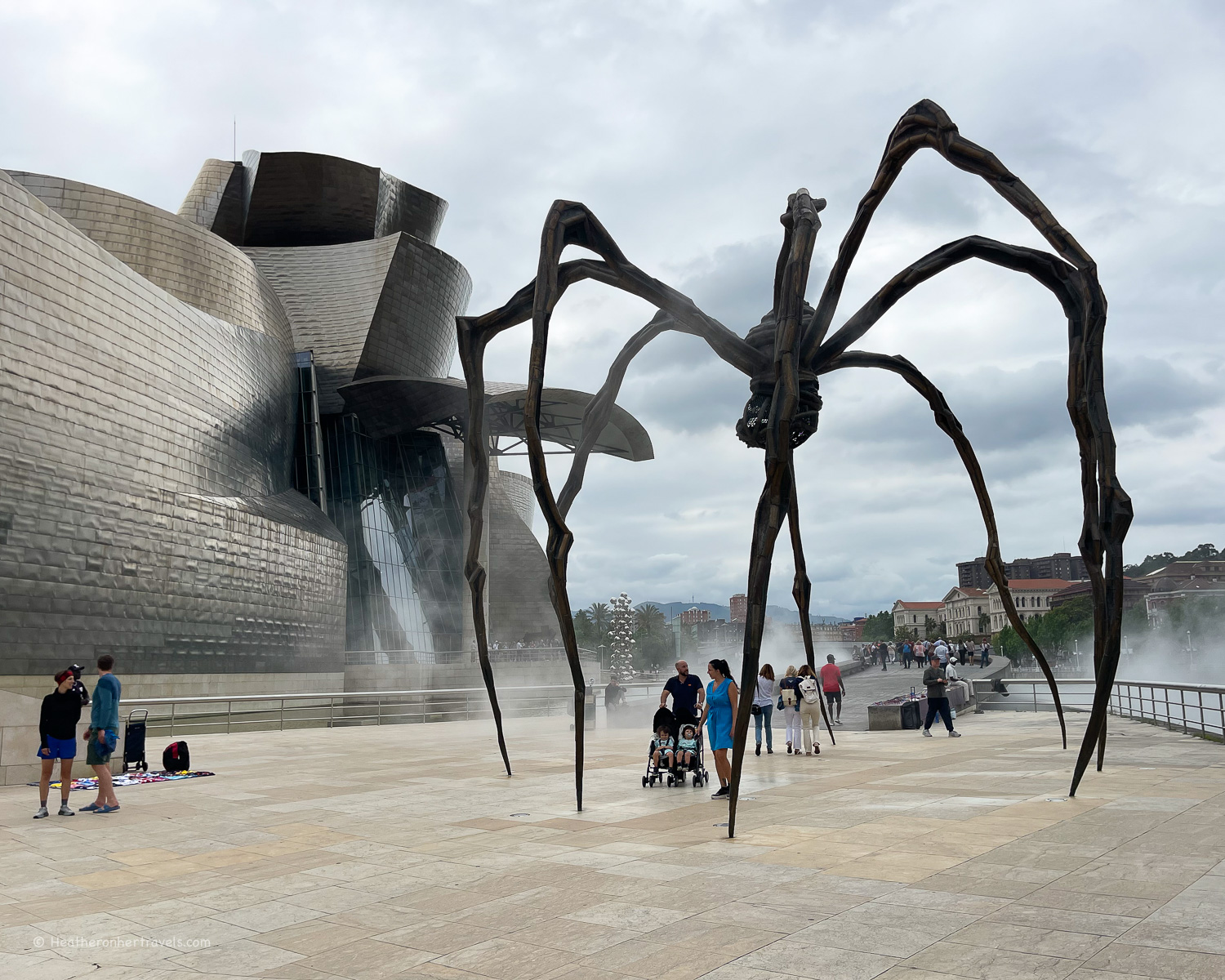
Tall tree and the eye by Anish Kapoor
The polished metal spheres of this tall sculpture by Bombay born Anish Kapoor are set in a shallow pool outside the Guggenheim. Each of the spheres is a miniature world, reflecting its surroundings and blending well with the building’s titanium panelled exterior.

3. Riverside Walk and the bridges of Bilbao
After visiting the Guggenheim you may be heading towards Bilbao’s Casco Viejo or Old Quarter. But instead of taking the tram or metro, enjoy the stroll along the Nervión river, which has promenades on both banks. The formerly industrialised riverscape now offers street art, sculpture and views of Bilbao’s many bridges, from 14th century to cutting edge modern.
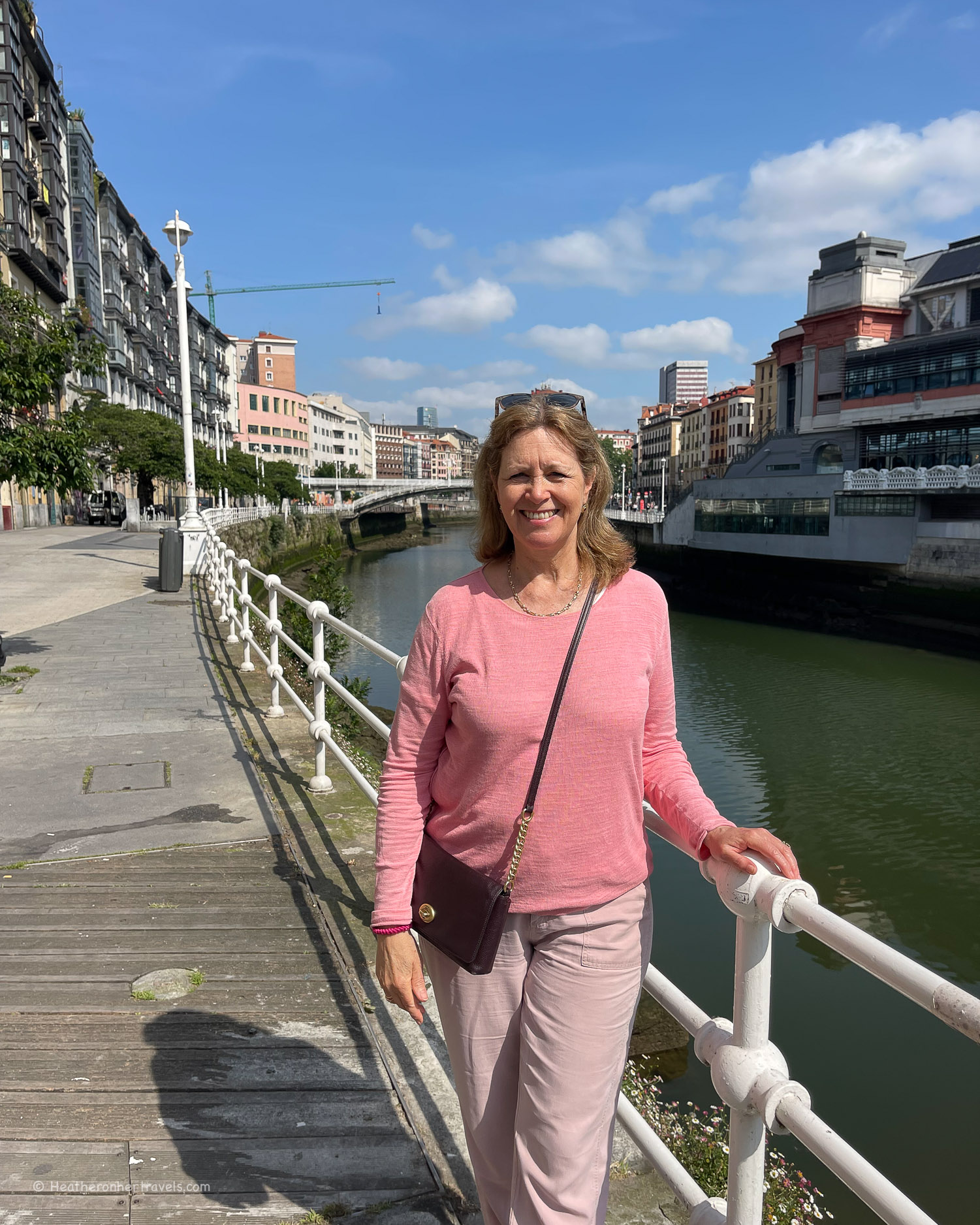
Arcos Rojas at La Salve Bridge
If you are walking from the Guggenheim, look back to see La Salve or Salbeko bridge, which was built in the 1970s. The red sculptural arch Arcos Rojas by Daniel Buren, was added to mark the 10th anniversary of the museum’s opening.
Passing underneath the bridge on the opposite side from the Guggenheim, there’s a huge street art mural The Key by Verónica and Christina Werckmeister, with 2 women chatting on the theme of peace and tolerance.

Zubizuri bridge
A little further along the river is the Zubizuri bridge, a footbridge designed by Santiago Calatrava. If you’ve visited Valencia, you’ll be familiar with the architect’s white curving lines set against a blue sky, as Calatrava also designed the City of Arts and Sciences.

Concordia Station
Near Plaza Arenal, pause to admire the Belle Epoque stained glass frontage of the Concordia station from the opposite bank of the river. If you go inside it’s unremarkably modern, however you can walk through to Abando station behind it.

Abando Train Station
While Abando is the busy terminus for intercity trains in Bilbao, it’s worth taking the escalators up to the railway level, even if you don’t have a train to catch. Here you’ll find a colourful stained glass mural, designed in 1948 by Caspar Montes Iturrioz, depicting scenes from Basque culture, agriculture and industry.
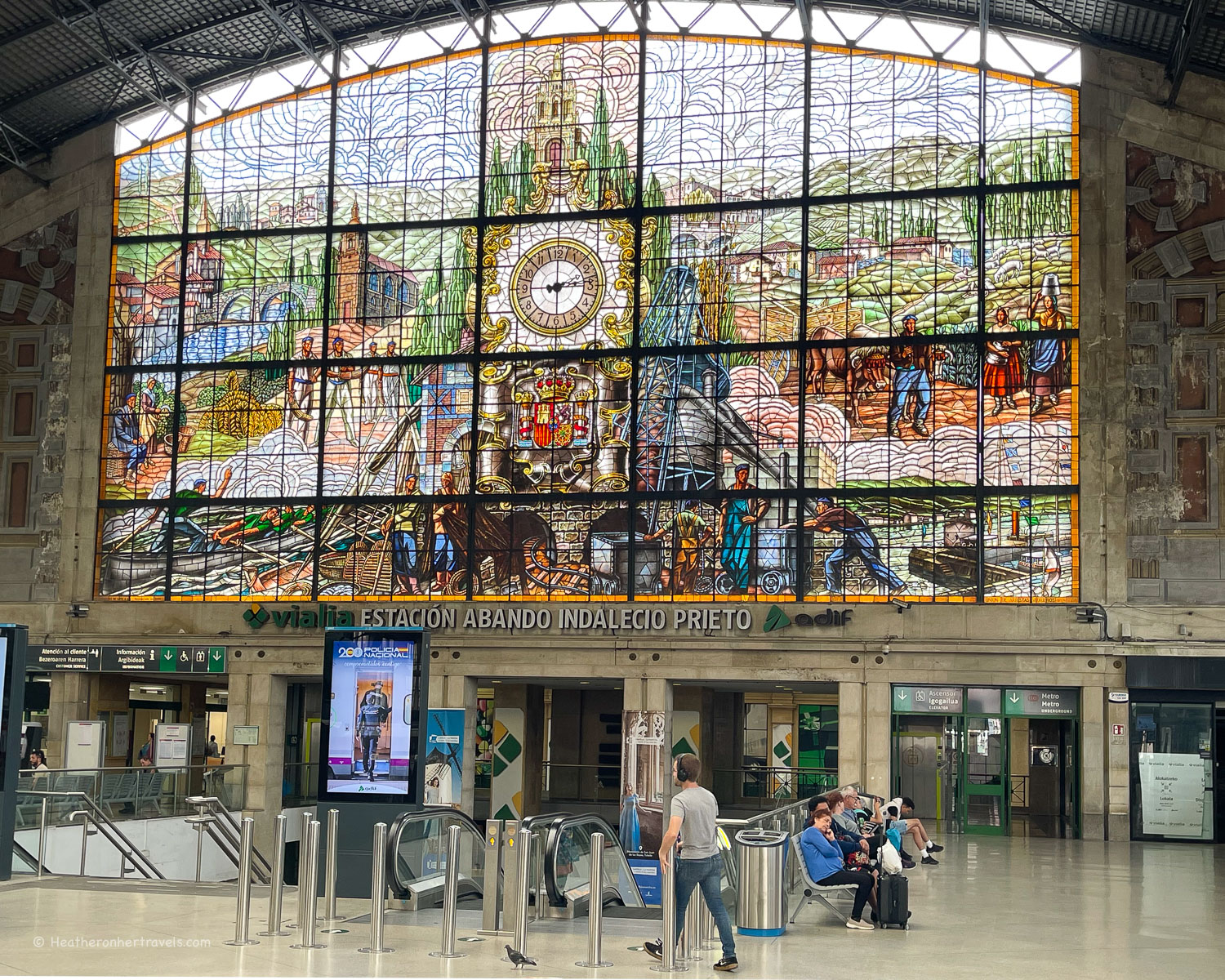
Continuing the walk from Plaza Arenal will bring you to the Casco Viejo and the city’s main market. But if you choose to walk just a little further to the 14th century St Anton’s Bridge, you’ll be rewarded by views of some beautiful restored riverside buildings.
These colourful former warehouses have small restaurants at the street level, and the area’s a trendy place to eat out at night.

4. Mercado de la Ribera
The Art Deco building of Mercado de la Ribera is a landmark on the riverfront near the Old Town. There has been a market on this spot since the 14th century, but following recent renovations the market is gleaming and modern inside.
With over 40 stalls, the market is certainly a temple to the best of Basque produce, and you should visit in the morning (closed Mondays) when most stalls will be open. However, I found the spacious modern interiors curiously lacking in soul, compared to some other Spanish markets I’ve visited.

There’s a section of the market devoted to Pintxos Bars, with a terrace overlooking the river. This is a convenient spot for an early evening aperitif and a chance to familiarise yourself with the typical Pintxos on offer in Bilbao.

5. Old Town / Casco Viejo
It’s a pleasure to dive into Bilbao’s charming Casco Viejo or Old Quarter, with its narrow cobbled streets. The area is full of bars, restaurants and small shops, with a couple of larger squares that are especially lively in the evening.
If you stay in this neighbourhood, choose the location carefully, as some of the streets are home to bars that can be noisy late into the night.
Las Siete Calles or Seven Streets of the Old Town
Closest to the river Nervión, are a grid of streets, known as Las Siete Calles or “Seven Streets”. They are the original streets dating back to the 14th century, from which the rest of the town expanded.
The area can seem quiet in the day, but comes to life in the evening once people start spilling out from the bars and restaurants. Look out for the old stone water fountain on Txakur street, that still dispenses potable water from the three dog’s head taps.
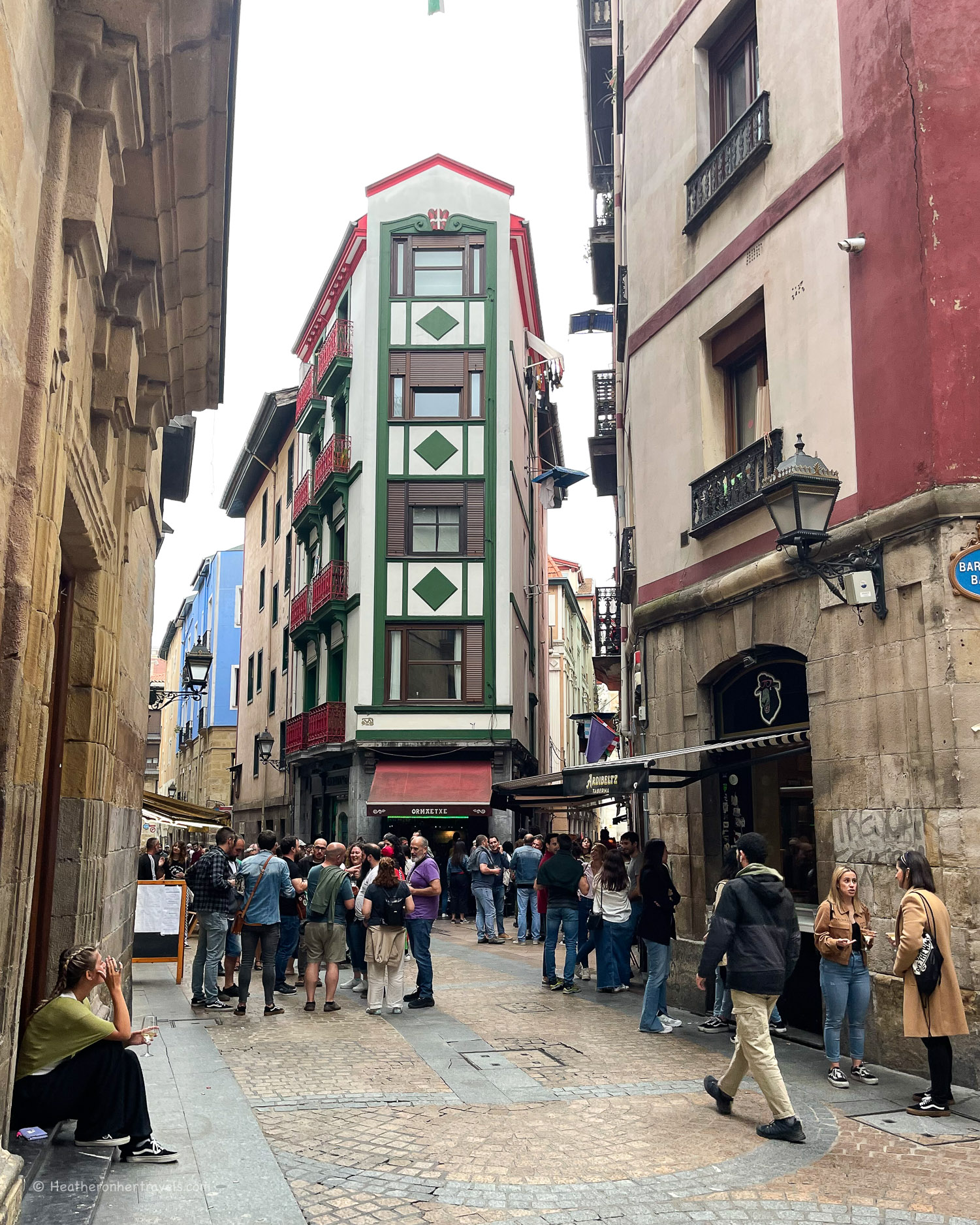
Hucha de los Txikiteros
On the corner of Calle Pilota and Calle Santa María is a small stone carving that’s one of the curiosities of the Old Town. It’s known as the Hucha de los Txikiteros or “Piggy Bank” of the groups known as Txikiteros who gather in local bars to drink and sing traditional Basque songs.
This is where they deposit their small change at the end of the night, which is then distributed to local charities. The stone statue depicting Our Lady of Begoña (with a glass in her hand) is modern, but there’s an older star on the ground that marks the spot where you can see the 16th century tower of the Basilica dedicated to the Virgin of Begoña.
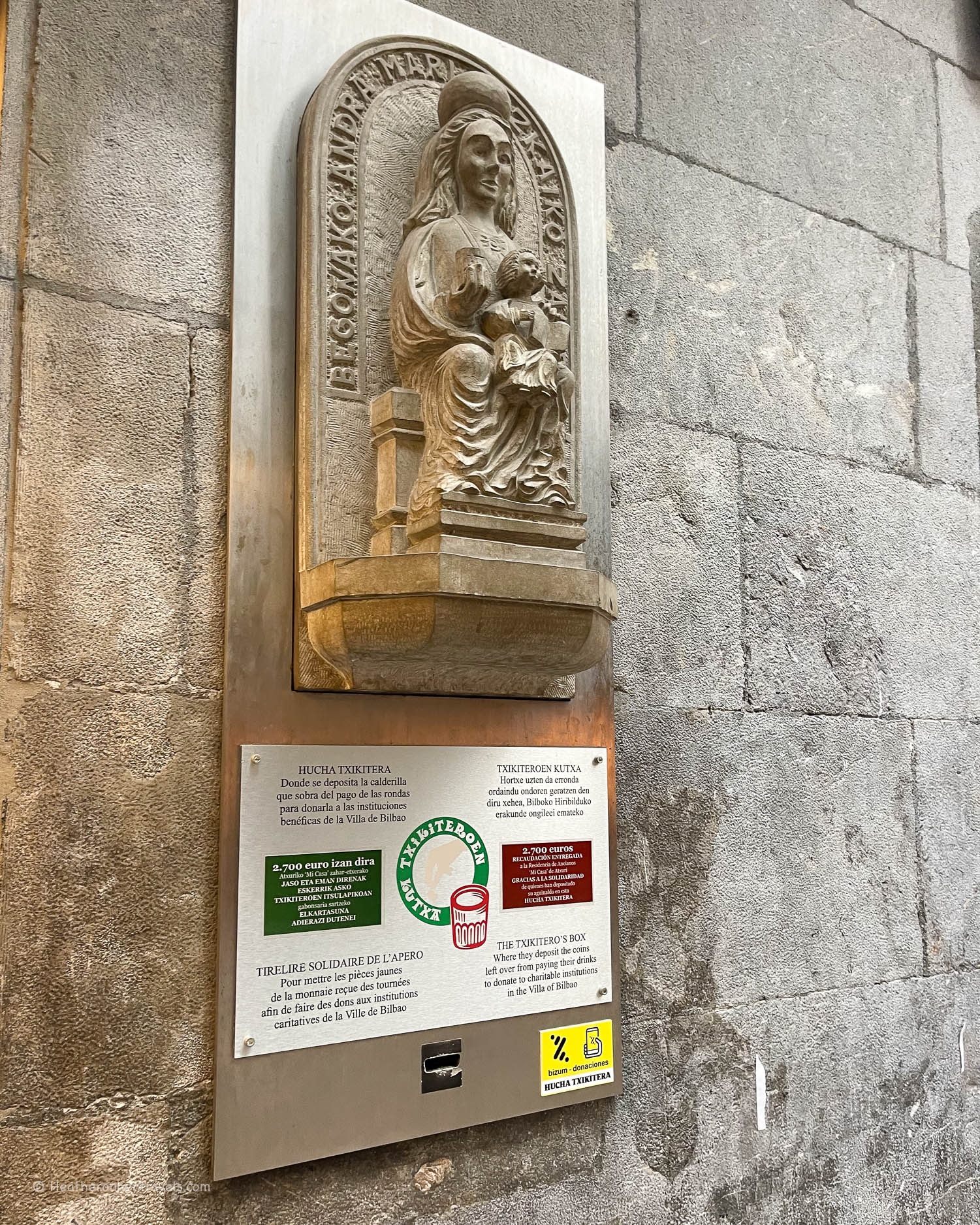
6. Catedral de Santiago
The Catedral de Santiago is Bilbao’s oldest church and stands in a small square at the heart of the old town, with streets radiating from it. There is an entrance charge, but we didn’t find the interiors much different from many other old churches in Spain.
We liked the unexpectedly green cloister garden that you can only see from inside of the church. The cathedral is one of the pilgrimage churches along the northern route of the Camino de Santiago and the scallop shell symbol can be seen above the main entrance door.

7. Plaza Nueva
The part of the old town that I liked the most was the Plaza Nueva, a large open square that’s enclosed by smaller pedestrian streets. During the day it’s a calm place to relax and people-watch, with an open central space that hosts a Sunday flea market.

By night the bars and restaurants under the arcades come to life and it’s a convivial place to stop for a drink and a few Pintxos. While we were there in the evening, we enjoyed local musicians touring the bars, with impromptu dancing and singing of local Basque songs.
Nearby is another square, Plaza Miguel Unamuno, which is also filled with bars and has a more local feel. Just off the square is the Casco Viejo metro stop and the Archaeological Museum.

8. Eat Pintxos in the Old Town
Pintxos (pronounced Pin-chos) are a Basque speciality – small snacks like tapas, based on a round of bread that you enjoy with a drink. You’ll find them in bars all over Bilbao and the Casco Viejo or Old Town comes alive at night with people spilling out onto the streets.

It’s a typical Basque tradition to go bar-hopping with friends in the evening, taking a drink and a Pintxos or two in each bar, before moving on to the next bar.
These snacks have become quite an art form, and they typically use local Basque produce, like anchovies, tuna, seafood, slow cooked pork, pimentos and local cheeses. Sometimes there are mini burgers or hot pintxos that are heated in the microwave or small plates ( raciones) to order from the menu.

We recommend familiarising yourself with what’s on offer before approaching the bar, as service is brisk and you’re expected to know what you want to order. Don’t be put off if a bar seems busy with crowds of people, as the staff are efficient and take orders rapidly. A busy bar is usually a sign of good quality!

Plaza Nueva is a great place to go bar hopping, as there’s a great atmosphere in the evening, with lots of bars under the arcades. We especially rated Gure Toki (Michelin recommended) for their inventive and tasty Pintxos and Victor Montes with a beautiful traditional shopfront is also well regarded.
Now we’ve covered the must-see spots, let’s mention a few other things to see in Bilbao if you have enough time.
9. Plaza de Arenal
On the northern edge of the Old Town is the Plaza de Arenal, a shady open park with paved areas, fountains and floral displays. At its heart is the Kiosko del Arenal, a Belle Epoque bandstand that’s used at weekends and fiestas for musical concerts.

Nearby is Teatro Arriaga, an attractive theatre dating back to 1890, that puts on opera and musicals. If you’d like to visit to see the interiors and displays of costumes, they run guided tours on Saturday and Sunday mornings.
10. Museo de Bellas Artes
While the Guggenheim features modern and contemporary artworks, the Museo de Belles Artes has a whole range of art and sculpture from old masters to pop-art, especially the work of Spanish and Basque artists.
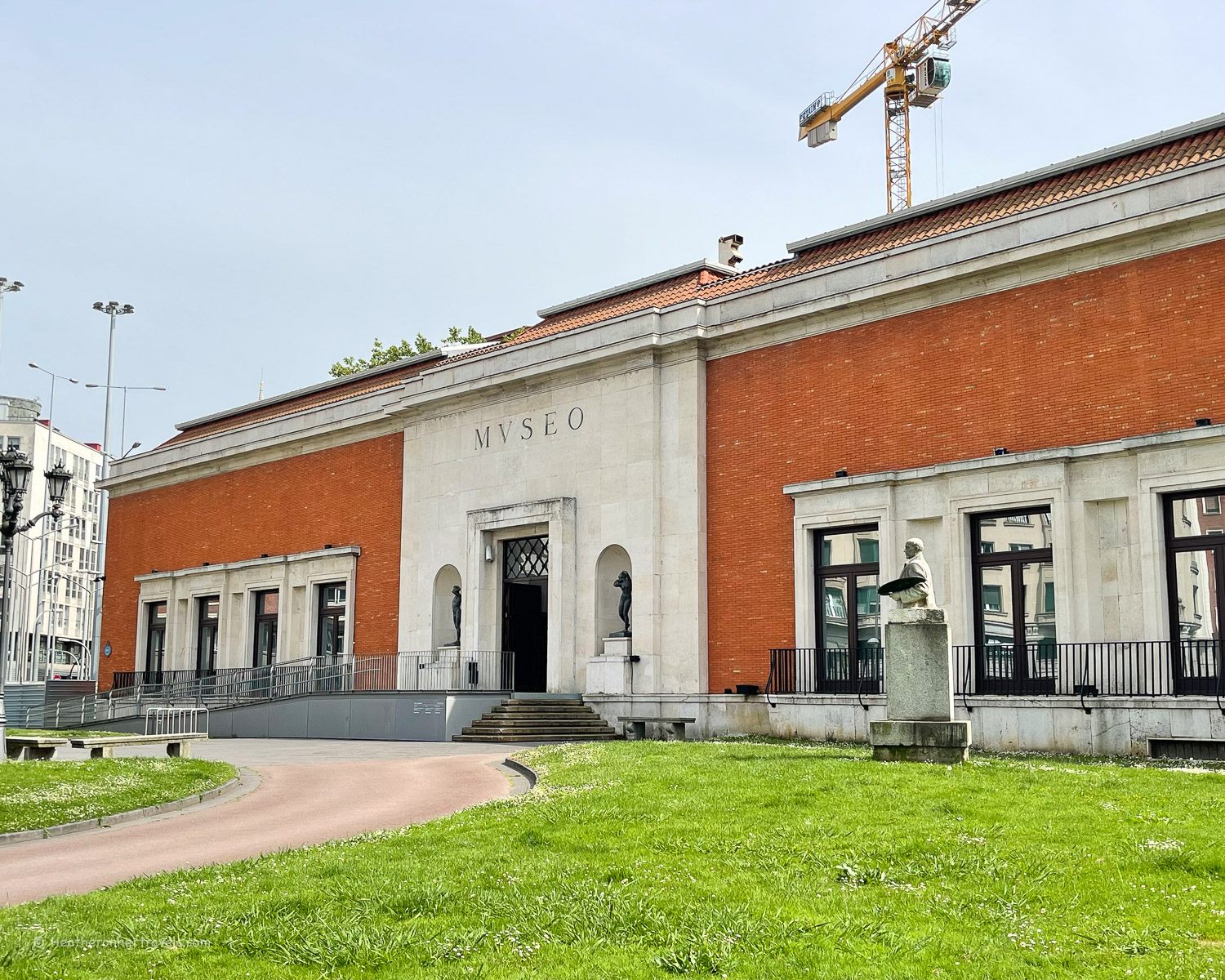
The neo-classical main building was built in 1945, with later modern extensions. When we visited the museum was mainly closed for a major renovation. However there are a few galleries open and entry is free during the renovation, so it’s worth popping in if you are passing.

11. Parque de Dona Casilda de Iturrizar
The largest green space in Bilbao’s New Town is the Parque de Dona Casilda de Iturrizar. It opened in the 1920s and is named after the philanthropist who donated the land. It’s a calm place to take a walk or have a picnic, with grass lawns and welcome shade under the trees.
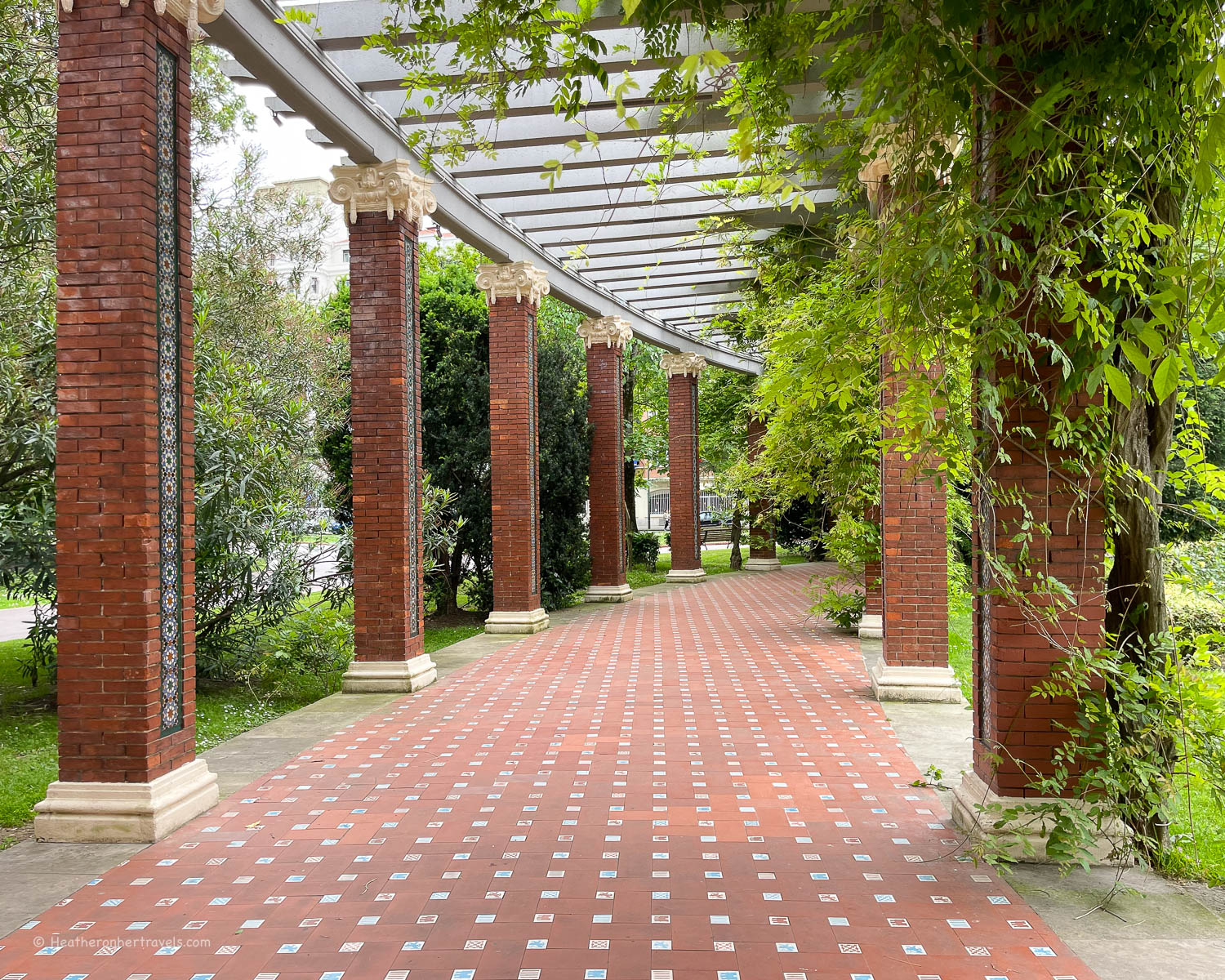
In the centre of the park is a large duckpond, but we most enjoyed a stroll through the romantic pergola covered with wisteria, roses and other climbing plants. With the fountains playing nearby, this would be especially charming in the spring when the flowers are in bloom.
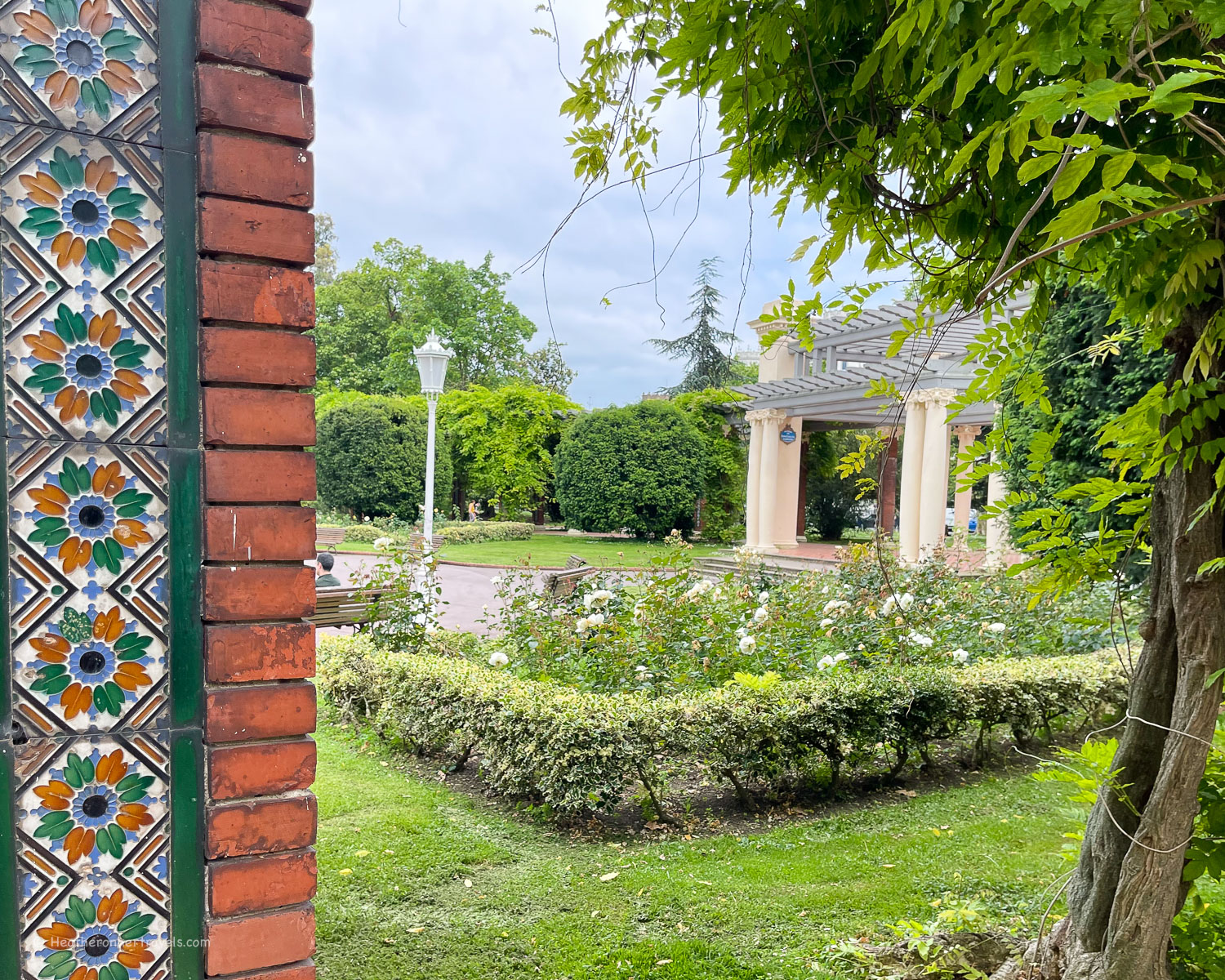
12. Take a river tour with Bilboats
Seeing Bilbao from the Nervión river is a relaxing way to see some of the major sights, especially if you are pushed for time or don’t want to do a lot of walking. Look out for the Bilboats pier, close to the Puente del Ayuntamiento (tram stop Pio Baroja), where you can take one of their river tours.

Trips run daily throughout the year except January – February. There’s a 1 hour tour, to show you the sights of the New Town or a 2 hour tour that takes you as far as the mouth of the estuary at Portugalete to see the Vizcaya bridge.
13. Funicular de Artxanda
To get a bird’s eye view over Bilbao from Monte Artxanda (it’s more of a hill than a mountain), take the funicular railway to the mirador at the top. The bottom station sits three blocks back from the Nervión river and the ride up the hill only takes a few minutes.

Although this funicular started in 1915, the carriage and station are surprisingly modern and you don’t get much of a view on the way up due to the surrounding trees and houses. But once at the top, there’s a spacious park to walk through, and a stunning viewpoint across the whole city.
From here you can see how Bilbao is surrounded by hills as you look down at the river snaking below towards the sea. There’s a photogenic Bilbao sign to take your selfie. Information boards explain how this area was once full of farms that became Sideria’s or cider houses.
You can tap on and tap off with your Barik card if you have one, or buy a ticket for the funicular from the machine.
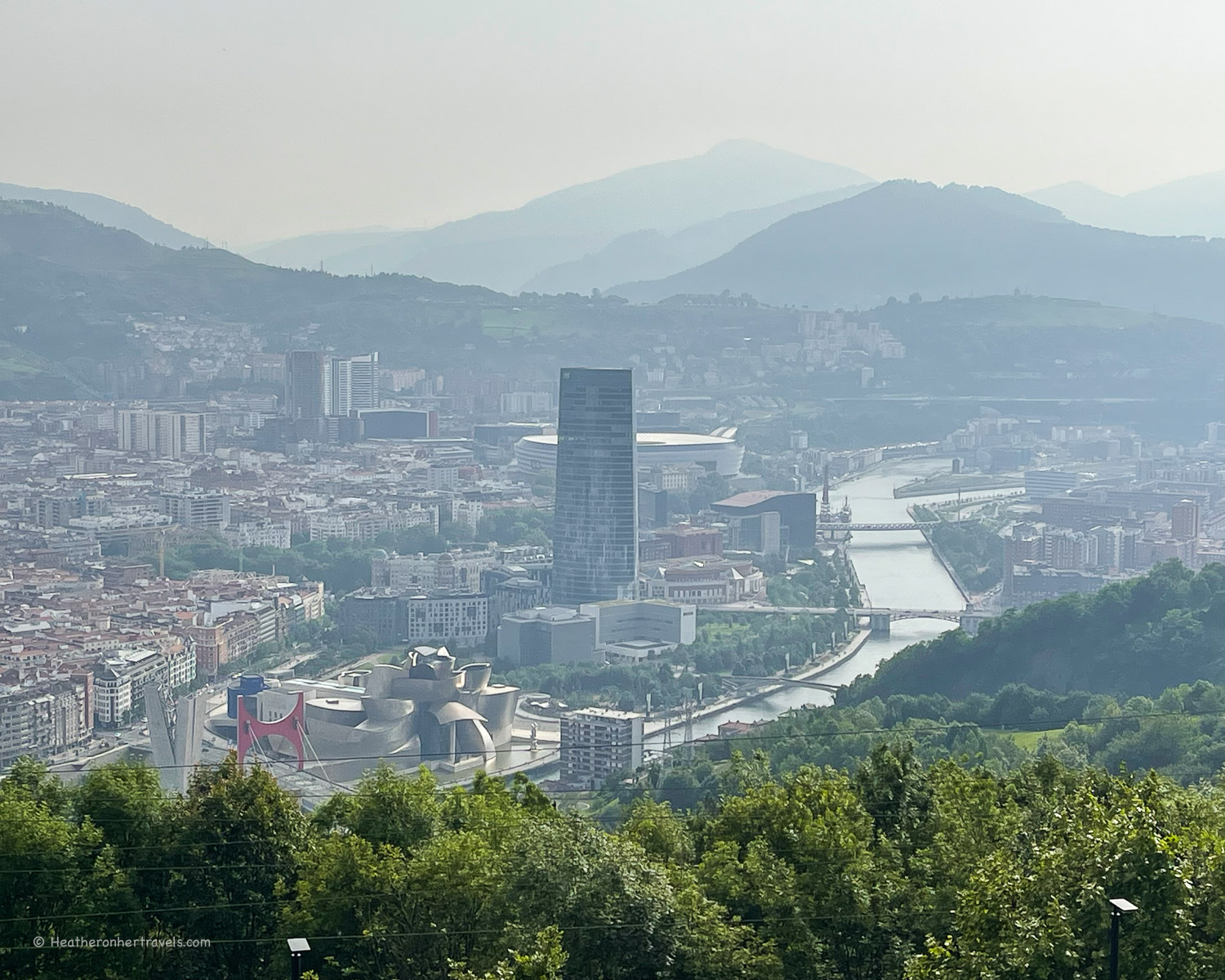
14. Itsasmuseum
To discover Bilbao’s shipbuilding and maritime heritage, head to Itsasmuseum, located on the northern edge of the New Town. We really enjoyed this museum, which is packed full of information and colourful exhibits, and would be a good choice for families.

There’s an outside dock that you can visit free of charge, in the area that was once a shipyard. Here you’ll find a collection of different vessels, some permanent and others visiting ships, such as the Greenpeace ship that was there when we visited. Another landmark is the red Carola crane that was once a working part of these docks.

Inside there’s a whole range of smaller ships and exhibitions, to explain Bilbao’s shipbuilding heritage and connections with the sea, that stretch back to the sailors who went to hunt for whales in Newfoundland.
Near Bilbao – on the Nervión River Estuary
While Bilbao is located a little inland from the coast, you can quickly reach its suburbs at the mouth of the Nervión river estuary, for access to beaches and seaside walks. The interesting neighbourhoods of Portugalate and Getxo can be visited together for an easy day or half-day trip.
15. Portugalete and the Vizcaya bridge
Located on the west bank of the Nevion river estuary, Portugalete is mainly known for the UNESCO World Heritage bridge, although it’s also worth taking a look at its pretty old quarter and river promenade.

Things to see in Portugalete
- Puente Colgante – also known as the Vizcaya Bridge was opened in 1883 and crosses the Nervión river close to its mouth, linking Portugalete and Getxo. As the 50 metre high bridge was designed to let shipping up river to Bilbao, a swinging gondola is used to transport cars and foot passengers across the river. You can also buy a ticket to ascend by lift to the walkway that runs along the top of the bridge, to see the views from the top.
- We opted for the inexpensive option (use your Barik transport card) of crossing the bridge on the gondola, which is larger than it seems from a distance. It runs constantly back and forth across the river and is a fun way of seeing the bridge from the water as well as a convenient way to cross to Getxo.

- Basilica de Santa Maria – this 16th century basilica is set on high ground above the river. It’s one of the pilgrimage churches on the route to Santiago de Compostella, although it was closed when we visited. However the terrace outside the church is the best place to get great photos of the Viscaya Bridge.

- Plaza de Solar – descending through the old town streets from the Basilica, you’ll reach Plaza del Solar, a cobbled medieval square facing the river. This is a good place to relax with a drink in one of the bars and a location for fiestas and brass band concerts at weekend. The riverside promenade is a shady place for a stroll, with a tourist information centre in the brightly painted former railway station building.
Getting to Portugalate
Take the Metro from central Bilbao on Line 2 and get off at Portugalete for the closest stop to the La Viscaya Bridge.
16. Getxo – beaches and old port
Crossing the river from Portugalete on the Vizcaya bridge, we continued our stroll along the seafront of Getxo as far as the Old Port, then found the Algorta Metro station to take us back to central Bilbao.

Things to see in Getxo
- From the Getxo side of the Viscaya bridge, continue walking in the direction of the river mouth, to reach Las Arenas beach. There’s a shady small park and green space on the pier that bounds the harbour with views towards the beach and the marina beyond.
- Beyond the small marina, the walkway is known as the Paseo de la Grandes Villas, where you can admire some of the elegant 20th century holiday villas, built for wealthy Basque families. There are information signs along the promenade to tell you about the most notable villas, and Hotel Embarcadero has a pleasant outdoor terrace to take a drink.

- The walk continues around the bay, bringing you to Playa de Ereaga, a long sandy beach which would be my choice of a place to swim.
- While there are a few beachfront bars and restaurants, if you are looking for a lunch stop I’d continue to the end of the beach and the Old Port. At the top of some steps are sculptures of the fishermen and women who lived in the pretty cottages that are crammed together just above the port.
- Bar Arrantzale would be my choice for lunch in this attractive neighbourhood, as it has a good selection of Pintxos and a shaded garden terrace in the small cobbled square.
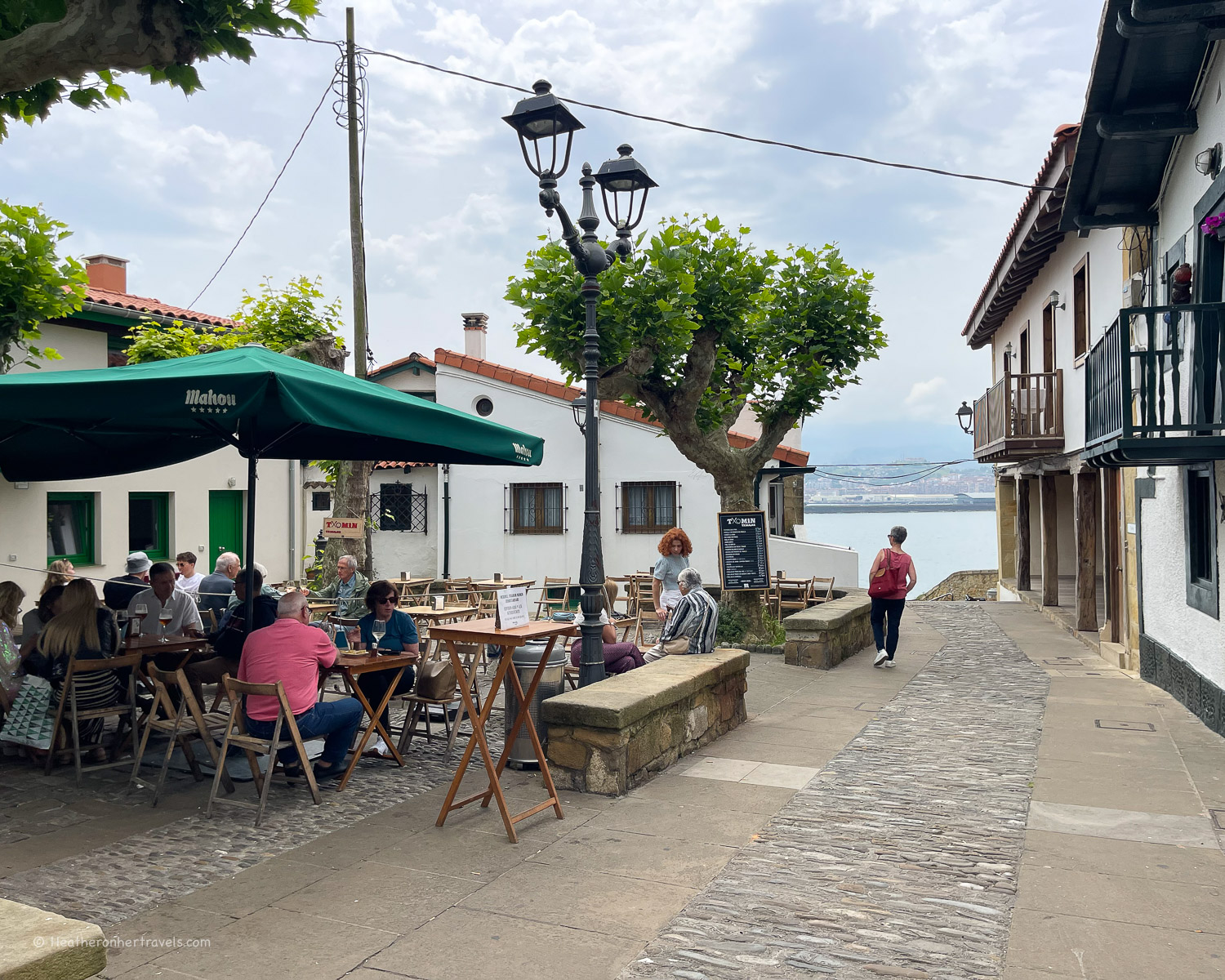
Getting to Getxo
Take the Metro from central Bilbao on Line 1 and get off at Algorta for the closest stop to the Old Port or Areeta closest to the La Viscaya Bridge.
Easy day trips from Bilbao – car free!
These days we try to travel more sustainably, using public transport or group tours rather than hiring a car. Since the public transport in Basque Spain is excellent, it usually works out cheaper and a lot more relaxing to go car free!
17. San Juan de Gaztelugatxe – walk to the picturesque chapel
The photogenic chapel of San Juan (Saint John) de Gaztelugatxe is perched on top of a rocky island that’s reached by a causeway. It was used as a Game of Thrones location doubling for Dragonstone in Season 7 of the series and is one of the most visited spots on the Basque coast.

A hermitage was first built here in the 9th century, a lonely spot with the waves crashing all around. The rocky islet was later fortified and came under attack on many occasions, with the chapel being destroyed and rebuilt several times. The chapel is maintained by the fishermen of the area, containing many nautical objects.
There are numerous legends and superstitions associated with the chapel, which is considered to bring good fortune and protection by local fishermen. Boats setting out on a long tuna fishing trip from Bermeo will first make turns in front of the islet to receive a blessing from Saint John.

Walking to the Hermitage
The chapel is reached on a walk that takes around 1 hour 30 mins as a round trip. You’ll first descend on a path from the cliff down to the sea, then traverse a causeway and climb a narrow path of 241 steps back up to the chapel.
It’s fine for anyone of reasonable fitness, with trainers or walking shoes recommended, but the path is not suitable for pushchairs or wheelchairs. There are also no toilets en route, but facilities are available at the restaurants near the start of the walk.
While visiting San Juan de Gaztelugatxe is free, you do need to pre-book a timed entrance ticket. This will be checked at the entrance point, before you start the walk down the hill and across the causeway.
How to get from Bilbao to San Juan de Gaztelugatxe
The most relaxing way to visit San Juan de Gaztelugatxe without a car is on a tour like this: From Bilbao: Gaztelugatxe, Bermeo and Gernika day trip. We took this tour with minibus transport, a guide to organise the entrance tickets and a visit to other interesting places such as Bermeo and Gernika on the same day.
If you prefer to get there independently, take the bus A3517 from San Jose Plaza (Elcano 5) in Bilbao (direction Bermeo). The bus runs around once an hour, the journey is 1 hour and you alight at the stop Gaztelu Begi near San Juan de Gaztelugatxe. Then walk 5 minutes down the hill to the entrance at the start of the walk where there are restaurants and other facilities. Find more details on the Bizkaibus website.
18. Bermeo – a pretty port known for Basque tuna fishing
Bermeo is a pretty fishing port that was formerly a centre for the Basque whaling industry.
The town still has an active fishing industry and is especially known for the catch of white “bonito” tuna, which is sustainably fished using purse seine nets. You can order it in many of the local restaurants that line the harbour or buy the canned tuna as a souvenir to take home.

Things to do in Bermeo
- Have a relaxed lunch in one of the cafes and seafood restaurants around the harbour, ordering the locally caught tuna or seafood – we recommend Batun Batun set just above the port.
- Wander along the long pier and see the mermaid statue at the port’s entrance representing a legend of Xixili, the water nymph who lured fishermen to their death.
- Visit the small but well designed Arrantzaleen Museum in the 15th century stone tower, Torre de Ercilla. It gives interesting insights into the fishing history and way of life in Bermeo.
- If you are lucky you might catch a festival day like we did, with parades of giant puppet figures accompanied by a Basque traditional band. We noticed people wearing matching neckerchiefs and were told that on this day schoolmates who graduated together meet annually for a drink and catchup.

How to get from Bilbao to Bermeo
We found a convenient way to reach Bermeo without a car was on this tour: From Bilbao: Gaztelugatxe, Bermeo and Gernika day trip.
If you prefer to get there independently, take the train from Zazpikaleak / Casco Viejo station in Bilbao to Bermeo. The train runs around every 30 mins, the journey is around 1 hour 20 mins. More details on the Euskotren website. There is also the option to take the A3515 bus from Bilbao but it takes a little longer at 1 hour 40 mins. More details on the Bizkaibus website.
19. Gernika – understand the shocking events that inspired Picasso
The small inland town of Gernika (Basque) or Guernica (Spanish) is best known for the tragic events of 1937. Heavy aerial bombing by German and Italian forces in support of General Franco, virtually destroyed the town and killed many civilians during the Spanish Civil War.
The shocking bombardment inspired artists such as Picasso, whose famous Guernica painting is replicated in tiles in the town. After the war Gernika was rebuilt and while not unattractive, the main reason to visit is to find out more about these events and understand the town as a symbol of Basque resistance.
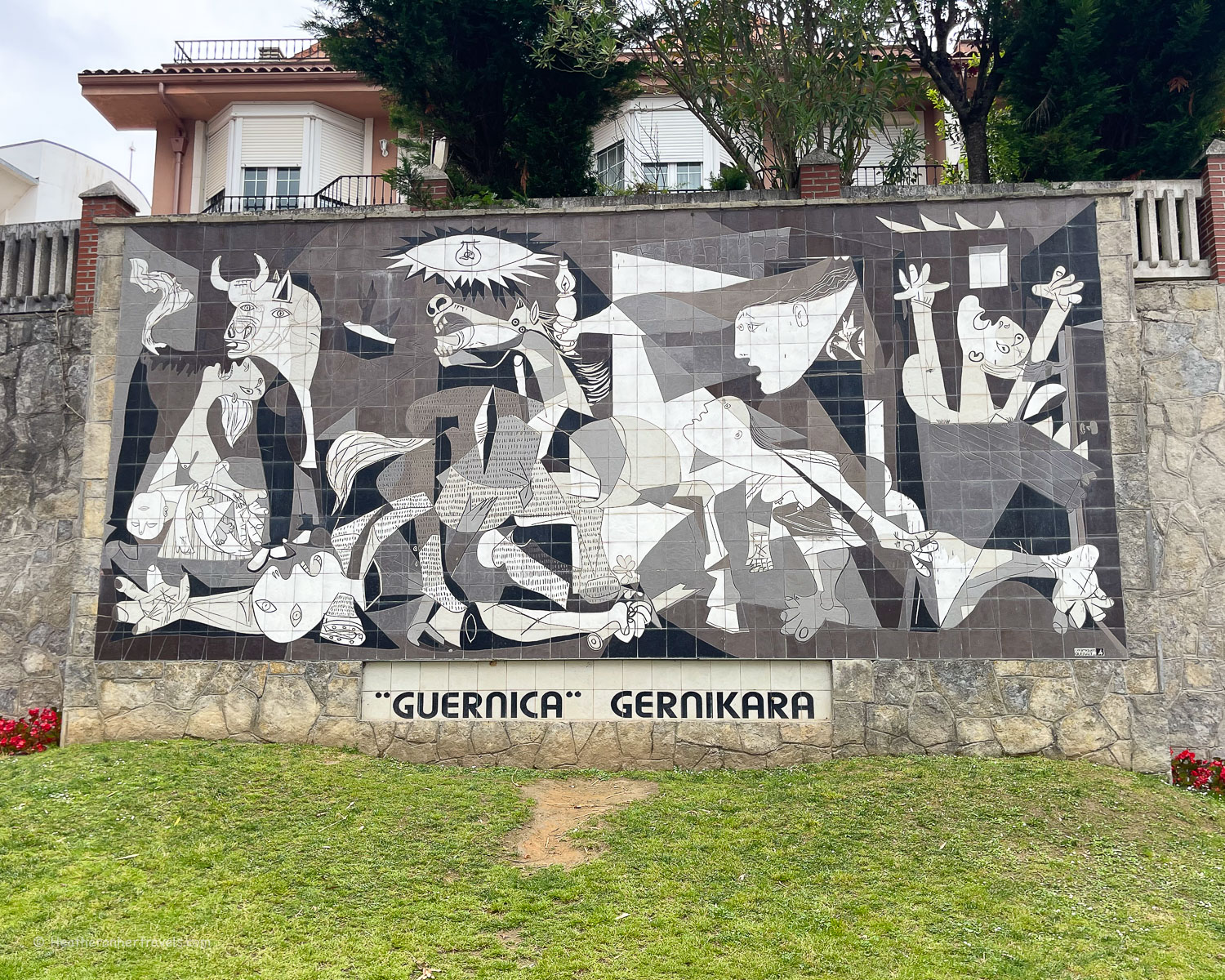
Top things to see in Guernica
- The tiled replica of Picasso’s Guernica painting that hangs in the Museo Reina Sofia in Madrid. This anti war painting depicting the horror of the attacks was first exhibited at the 1937 Paris World Fair.
- Museo de la Paz de Guernica – the Gernika Peace Museum dedicated to peace is inspired by the tragic events in the town. Exhibitions and audio-visual presentations provide a deeper understanding of the Spanish Civil War and the bombing of Guernica.
- Casa de Juntas – the Assembly House is the seat of the Basque provincial parliament and free to visit, although you need to pre-book your visit online. Four rooms are open to the public, including the hall with a beautiful stained glass roof. Outside is the stump of an old oak tree, which was the traditional spot for the members of parliament to meet, and a symbol of Basque independence.
- In the nearby Parque de los Pueblos de Europa, look out for the sculptures by Basque sculptor Eduardo Chillida and another by Henry Moore in collaboration with Chillida.

How to get from Bilbao to Gernika
We visited Gernika on this day trip, which we thoroughly enjoyed: From Bilbao: Gaztelugatxe, Bermeo and Gernika day trip.
If you prefer to get there independently, take the train from Zazpikaleak / Casco Viejo station in Bilbao to Gernika. The train runs around every 30 mins, the journey is around 1 hour. More details on the Euskotren website. There is also the option to take the A3515 or A3514 bus from Bilbao but it takes a little longer at 1 hour 10 mins. More details on the Bizkaibus website.
Getting around in Bilbao
There is a modern integrated transport system in Bilbao, with metro, bus, tram and funicular to take you around the city. Having said that, the city is very walkable and we enjoyed strolling through the pedestrianised narrow streets of the Old Town, and along the riverside promenade.

We particularly liked taking the tram, as it runs along the river, passing many city landmarks. The metro is an easy way to get out to the coastal suburbs of Portugalate and Getxo.
Intercity buses run from the Intermodal bus station and intercity trains from Bilbao Abando station. Look out for the curvaceous design of some metro entrances, which were designed by architect Norman Foster and are known locally as the Fosteritos.

Top tip: On arrival buy a Barik card at the train or metro station for €3. You can then charge this at tram, train and metro stations (€5 increments) and use it to tap on / tap off at tram, bus and metro stops. It’s the same card for all forms of city transport (including the funicular and Viscaya bridge) and you can use the same card for more than one person.
Read Next
Learn more about Spain’s Basque Country in my article Basque Country itinerary – 1 week car free in Northern Spain
Read more about my travels in Spain
Eduardo Chillida in San Sebastian – where to see his sculptures
Pin it!


This article is originally published at Heatheronhertravels.com

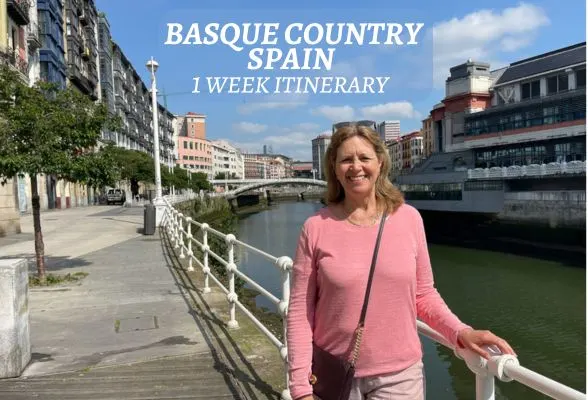


Hels
Sunday 8th of September 2024
Picasso's Guernica is well known in Madrid but I didn't know there was a replica in Bilbao. Mind you, the Civil War tragedies must have just about destroyed this city.
Many thanks for a very comprehensive coverage of Bilbao. I hope there is no temperance movement there with all that bar hopping :)
Heather Cowper
Monday 16th of September 2024
@Hels I was amazed at how Guernica has been rebuilt - not exactly old but an attractive town nonetheless. The bar hopping was fun, but it's as much about the food as the drinks!